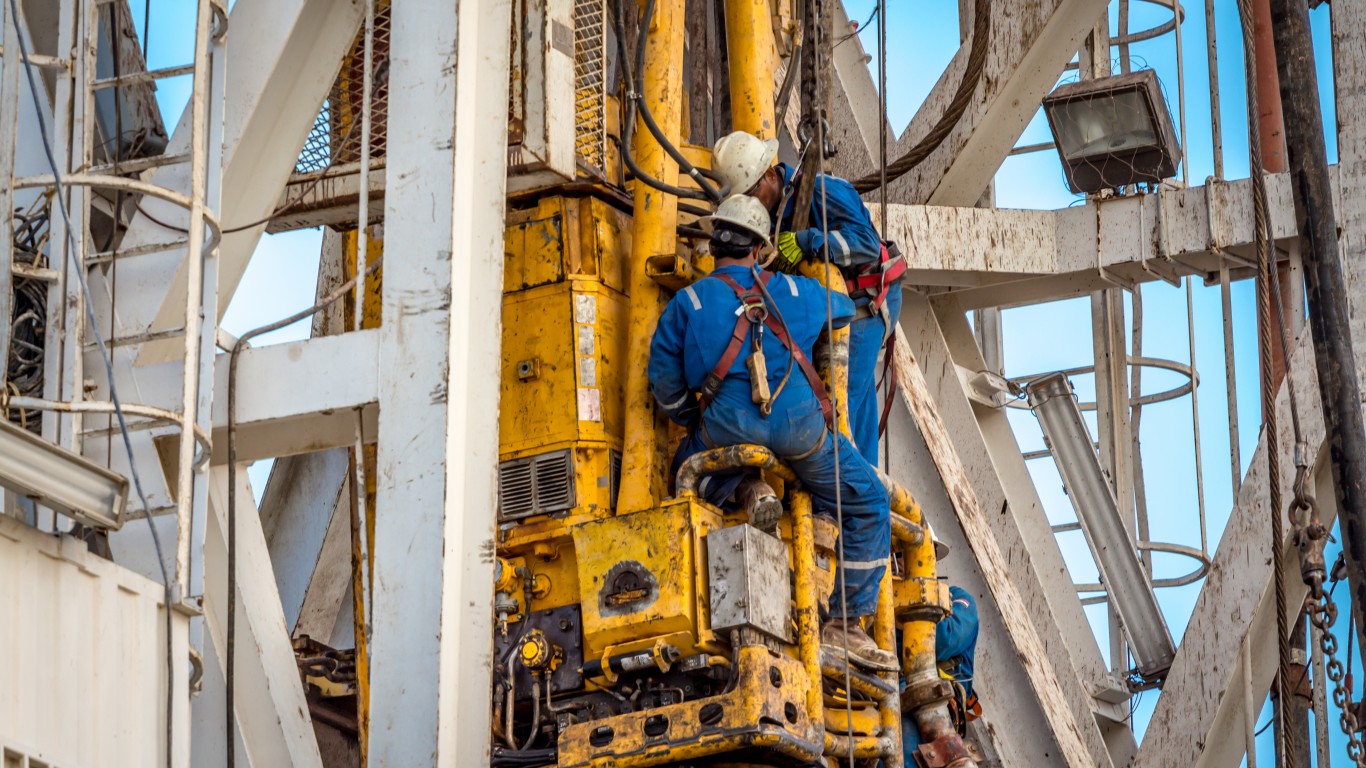Energy
What Halliburton, Schlumberger Earnings Suggest About Oil Patch Services

Published:

Halliburton Co. (NYSE: HAL) reported third-quarter 2020 results before markets opened Monday. The oil and gas services company posted adjusted diluted earnings per share (EPS) of $0.11 on revenues of $3.0 billion. In the same period a year ago, the company reported EPS of $0.05 on revenues of $5.6 billion. Third-quarter results also compare to consensus estimates for EPS of $0.08 per share and $3.1 billion in revenues.
Last Friday, peer Schlumberger Ltd. (NYSE: SLB) reported third-quarter adjusted diluted quarterly EPS of $0.16 on revenues of $5.3 billion. In the same period a year ago, Schlumberger reported adjusted EPS of $0.43 on revenues of $8.5 billion. EPS beat expectations by three cents and revenue missed by about $100 million.
Schlumberger stock closed down nearly 9% on Friday at $14.97 while Halliburton closed down about 6.3% at $12.25. Shares of the former have dropped 52% so far this year and nearly 77% over the past five years. Halliburton has dropped by nearly 34% over the past 12 months and by just over 65% over the past five years. While neither had much to show for the previous four years, 2020 has truly been an annus horribilis for both.
New drilling is down, although it did pick up a little in the final three weeks of the quarter, and both Halliburton and Schlumberger have been focused on reducing costs in order to lift margins. Schlumberger took a third-quarter charge of $63 million for workforce reduction. Halliburton’s charge totaled $133 million for pretax severance and other charges related to workforce reductions.
Halliburton CEO Jeff Miller commented that the company has a strong international business, lean operations in North America, and “an efficient capital deployment strategy, all enabled by continued adoption of leading digital technologies” for the company and its customers.
Schlumberger CEO Olivier Le Peuch said much the same thing last week: “Through this cycle, we are leading technology innovation for our customers and reinventing ourselves to deliver a return above our cost of capital through the combination of capital stewardship, margin expansion, and free cash flow generation.”
But the new normal for both is revealed in the year-over-year revenue numbers. Halliburton’s third-quarter revenue fell 47% year over year, while Schlumberger’s fell by 38%. Reinventing an oilfield services company as a technology company inevitably means lower revenues. It is margin that matters, and margin is driven by lower costs and higher prices.
While the oilfield services firms are reducing costs, prices for their ultimate product (a barrel of oil) are stagnating and may not recover until late next year. As long as prices remain low, little new drilling will take place, and well completions combined with new digital technology cannot create margin out of thin air.
At Halliburton, operating margin for the completion and production segment totaled 13.5%, with $212 million of operating income on revenue of $1.57 billion. The drilling and evaluation segment posted revenue of $1.4 billion and operating income of $105 million, for an operating margin of 7.5%. At Schlumberger, pretax operating income was down 52% year over year, with production margin at 12.6%, drilling margin at 9.4% and reservoir characterization margin at 16.7%.
Halliburton did not provide guidance, but consensus estimates for the fourth quarter call for revenue of $3.04 billion and EPS of $0.09. For the full year, analysts are looking for EPS of $0.53 and revenue of $14.36 billion.
The consensus analyst estimate for Schlumberger’s fourth-quarter EPS is $0.14 on revenue of $5.33 billion. For the full year, the EPS estimate is $0.56 on revenue of $23.53 billion.
Early Monday, Halliburton shares traded up about 0.6%, at $12.32 in a 52-week range of $4.25 to $25.47. The consensus price target on the stock is $15.50. Halliburton pays a dividend yield of 1.47%.
Schlumberger stock traded up almost 2% to $15.26, in a 52-week range of $11.87 to $41.14 and with a consensus price target of $23.46. The company’s dividend yield is 3.34%.
Thank you for reading! Have some feedback for us?
Contact the 24/7 Wall St. editorial team.